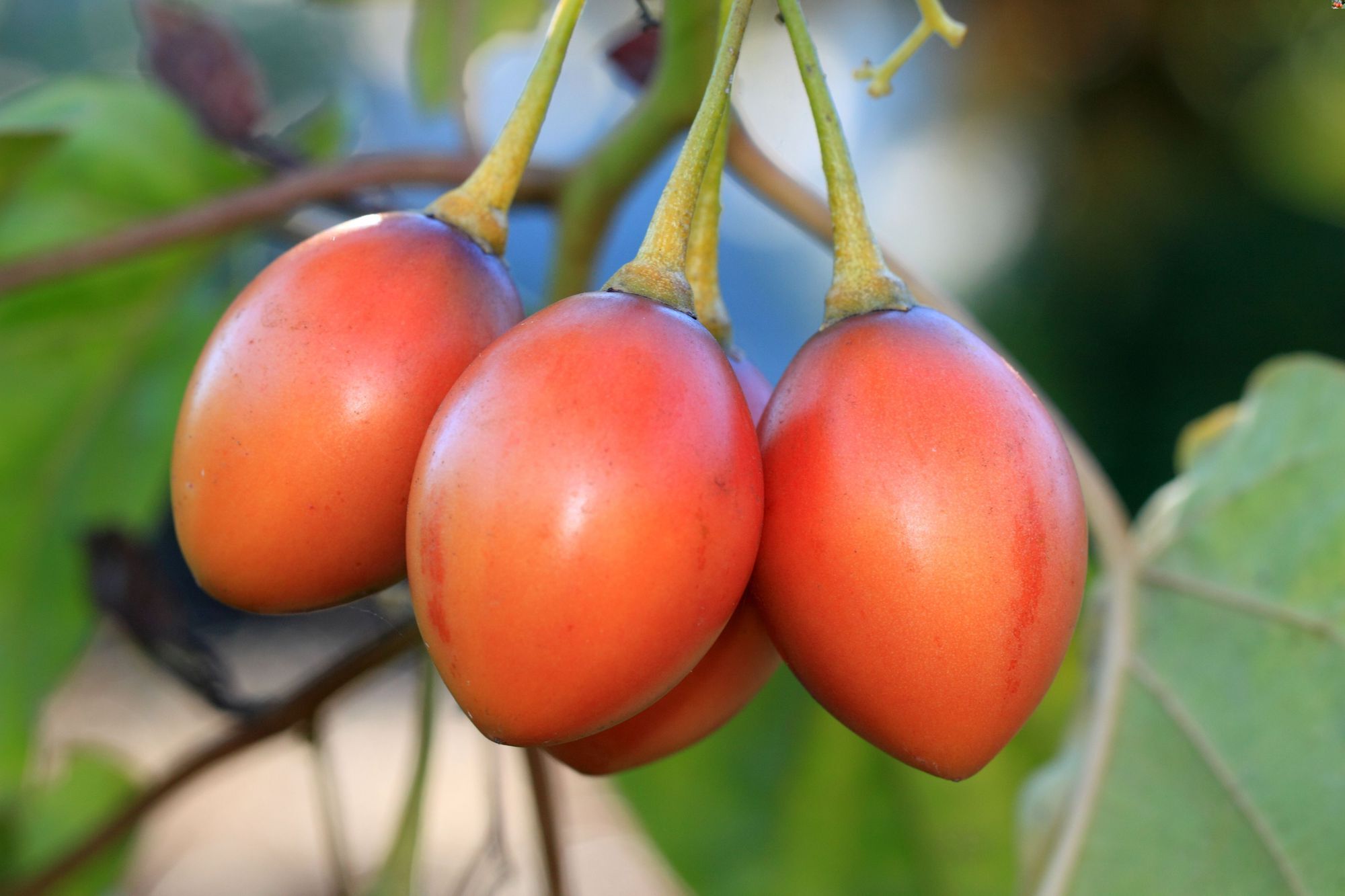
What is a tamarillo? This vibrant fruit, often called the "tree tomato," is a hidden gem in the world of exotic produce. Originating from the Andes of South America, tamarillos are packed with flavor and nutrients. They come in various colors, including red, orange, and yellow, each offering a unique taste experience. Tamarillos are rich in vitamins A, C, and E, making them a healthy addition to any diet. Their tangy, slightly sweet flavor makes them perfect for both savory dishes and desserts. Whether eaten raw, cooked, or blended into smoothies, tamarillos are a versatile fruit worth trying.
Key Takeaways:
- Tamarillos, also known as tree tomatoes, are tangy fruits rich in vitamins and antioxidants. They can be enjoyed raw, in salads, sauces, desserts, and juices, and are easy to grow in subtropical climates.
- Tamarillos are oval-shaped fruits with a unique flavor, a mix between tomatoes and passion fruit. They are packed with vitamin C, vitamin A, fiber, and antioxidants, making them a healthy and delicious snack option.
What is a Tamarillo?
Tamarillo, also known as the tree tomato, is a small, tangy fruit that grows on trees. Originating from South America, this fruit has gained popularity worldwide due to its unique flavor and nutritional benefits. Here are some fascinating facts about tamarillos.
-
Origin: Tamarillos are native to the Andean regions of Peru, Ecuador, and Colombia.
-
Scientific Name: The scientific name for tamarillo is Solanum betaceum.
-
Family: Tamarillos belong to the nightshade family, which includes tomatoes, potatoes, and eggplants.
-
Appearance: These fruits are oval-shaped and come in various colors, including red, orange, and yellow.
-
Taste: Tamarillos have a tangy, slightly sweet flavor, often described as a mix between tomatoes and passion fruit.
Nutritional Benefits of Tamarillos
Tamarillos are not just tasty; they are also packed with nutrients that can benefit your health. Here are some nutritional facts about tamarillos.
-
Vitamin C: Tamarillos are rich in vitamin C, which helps boost the immune system.
-
Vitamin A: They contain a good amount of vitamin A, essential for eye health.
-
Fiber: High in dietary fiber, tamarillos aid in digestion and help maintain a healthy gut.
-
Antioxidants: These fruits are loaded with antioxidants, which help fight free radicals in the body.
-
Low Calories: Tamarillos are low in calories, making them a great snack for those watching their weight.
How to Eat Tamarillos
Wondering how to enjoy this exotic fruit? Here are some ways to incorporate tamarillos into your diet.
-
Raw: You can eat tamarillos raw by scooping out the flesh with a spoon.
-
Salads: Add sliced tamarillos to salads for a tangy twist.
-
Sauces: Use tamarillos to make sauces or chutneys that pair well with meats and cheeses.
-
Desserts: Incorporate tamarillos into desserts like pies, tarts, and fruit salads.
-
Juices: Blend tamarillos into smoothies or juices for a refreshing drink.
Growing Tamarillos
Interested in growing your own tamarillo tree? Here are some facts about cultivating tamarillos.
-
Climate: Tamarillo trees thrive in subtropical and tropical climates.
-
Soil: They prefer well-drained, fertile soil with a pH between 5.5 and 7.5.
-
Watering: These trees need regular watering, especially during dry periods.
-
Pruning: Prune tamarillo trees to encourage healthy growth and fruit production.
-
Harvesting: Tamarillos are usually ready for harvest 18 to 24 months after planting.
Final Thoughts on Tamarillo
Tamarillos, often called tree tomatoes, pack a punch with their unique flavor and impressive nutritional benefits. These small fruits are rich in vitamins A, C, and E, making them great for boosting immunity and skin health. They also contain antioxidants and fiber, which help with digestion and overall well-being. Originating from South America, tamarillos have found their way into various cuisines worldwide, adding a tangy twist to dishes.
Whether eaten fresh, blended into smoothies, or used in sauces, tamarillos offer versatility in the kitchen. Their vibrant color and distinct taste make them a favorite among food enthusiasts. If you haven't tried tamarillos yet, you're missing out on a delicious and nutritious treat. So next time you're at the market, grab a few and experiment with this exotic fruit. Your taste buds and body will thank you!
Frequently Asked Questions
Was this page helpful?
Our commitment to delivering trustworthy and engaging content is at the heart of what we do. Each fact on our site is contributed by real users like you, bringing a wealth of diverse insights and information. To ensure the highest standards of accuracy and reliability, our dedicated editors meticulously review each submission. This process guarantees that the facts we share are not only fascinating but also credible. Trust in our commitment to quality and authenticity as you explore and learn with us.


